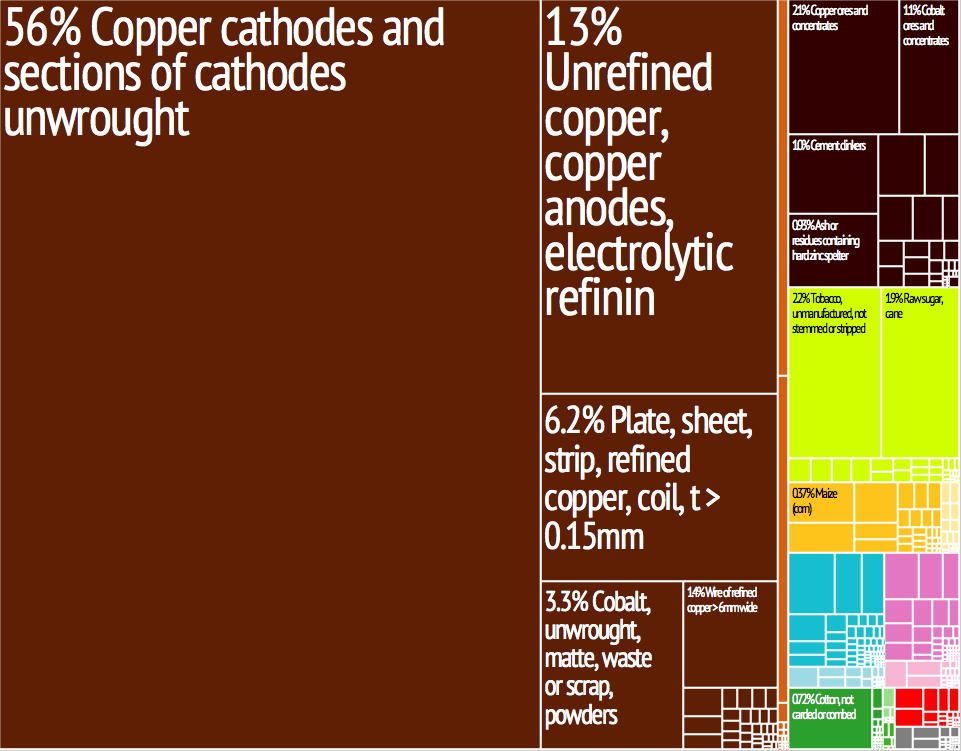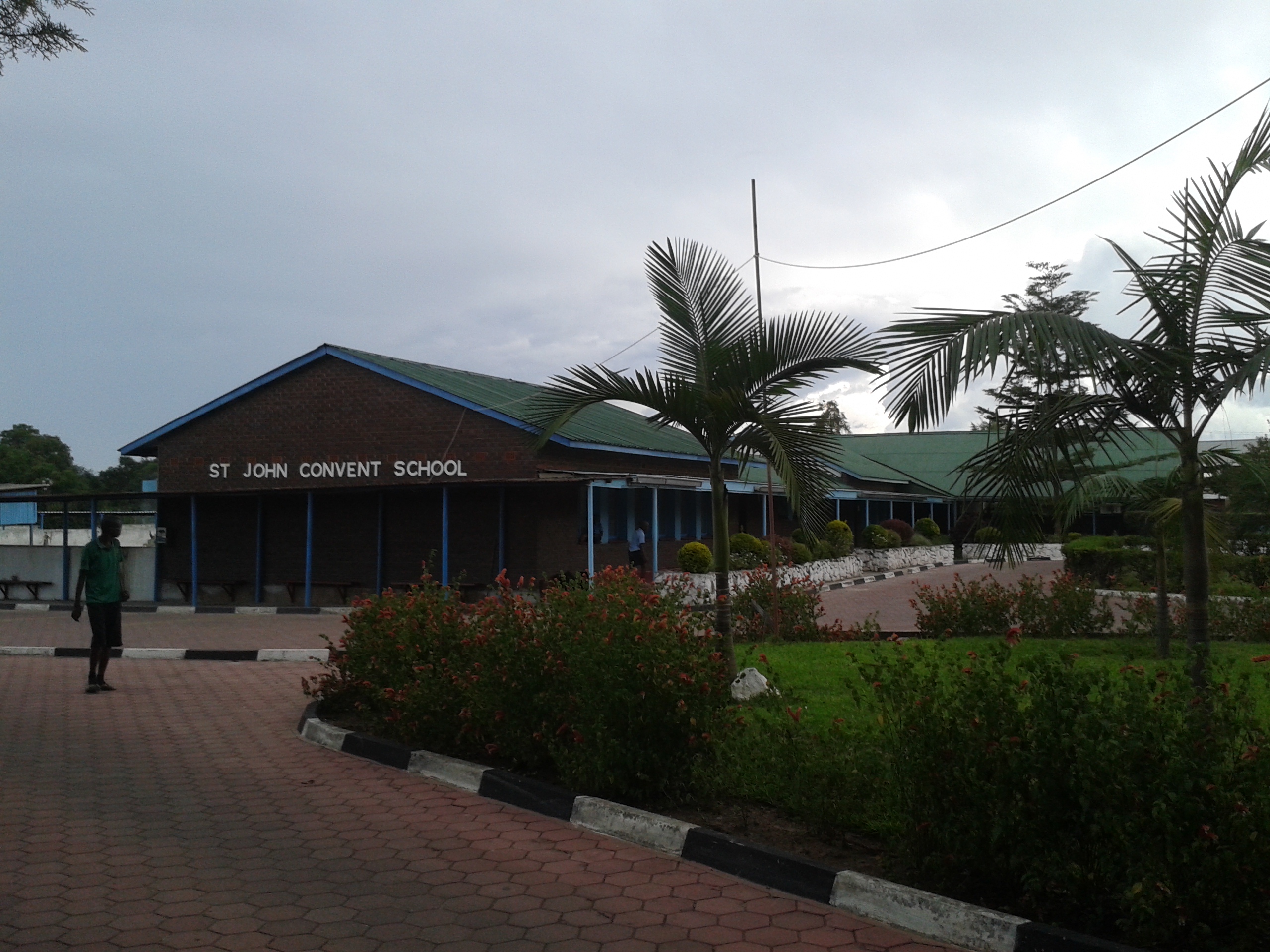|
Mining In Zambia
The mining landscape in Zambia covers production of multiple mineral raw materials, including copper, cobalt, gold, nickel, manganese, emeralds, beryllium, myriad gemstones, sulfur, zinc, coal, iron ore, steel, limestone, uranium and other platinum-group metals. Mining has long been a significant primary sector industry and contributor to the Zambian economy by providing export income, royalty payments and employment. The geology and mineral resource distribution covers a large portion of Zambia's square area stretching across all 10 provinces of the country. The Geological Survey department has made considerable achievements under its statutory obligations to develop cadastral maps for exploration and mining in the country. Mineral resource exploitation was originally clustered in centers of mining operations along the Copperbelt, like Konkola and Kitwe. In the last two decades, following the issuance of mining and exploration licences by thZambia Environmental Managemen ... [...More Info...] [...Related Items...] OR: [Wikipedia] [Google] [Baidu] |
Mining
Mining is the extraction of valuable minerals or other geological materials from the Earth, usually from an ore body, lode, vein, seam, reef, or placer deposit. The exploitation of these deposits for raw material is based on the economic viability of investing in the equipment, labor, and energy required to extract, refine and transport the materials found at the mine to manufacturers who can use the material. Ores recovered by mining include metals, coal, oil shale, gemstones, limestone, chalk, dimension stone, rock salt, potash, gravel, and clay. Mining is required to obtain most materials that cannot be grown through agricultural processes, or feasibly created artificially in a laboratory or factory. Mining in a wider sense includes extraction of any non-renewable resource such as petroleum, natural gas, or even water. Modern mining processes involve prospecting for ore bodies, analysis of the profit potential of a proposed mine, extraction of the desired materials, an ... [...More Info...] [...Related Items...] OR: [Wikipedia] [Google] [Baidu] |
Platinum Group
The platinum-group metals (abbreviated as the PGMs; alternatively, the platinoids, platinides, platidises, platinum group, platinum metals, platinum family or platinum-group elements (PGEs)) are six noble, precious metallic elements clustered together in the periodic table. These elements are all transition metals in the d-block (groups 8, 9, and 10, periods 5 and 6). The six platinum-group metals are ruthenium, rhodium, palladium, osmium, iridium, and platinum. They have similar physical and chemical properties, and tend to occur together in the same mineral deposits. However, they can be further subdivided into the iridium-group platinum-group elements (IPGEs: Os, Ir, Ru) and the palladium-group platinum-group elements (PPGEs: Rh, Pt, Pd) based on their behaviour in geological systems. The three elements above the platinum group in the periodic table (iron, nickel and cobalt) are all ferromagnetic; these, including the lanthanide element gadolinium, are the only known tr ... [...More Info...] [...Related Items...] OR: [Wikipedia] [Google] [Baidu] |
Southern Province, Zambia
Southern Province is one of Zambia's ten provinces, and home to Zambia's premier tourist attraction, Mosi-oa-Tunya (Victoria Falls), shared with Zimbabwe. The centre of the province, the Southern Plateau, has the largest area of commercial farmland of any Zambian province, and produces most of the maize crop. The Zambezi River is the province's southern border, and Lake Kariba, formed by the Kariba Dam, lies along the province's south-eastern edge. The eastern border is the Kariba Gorge and Zambezi, and the north-east border is the Kafue River, forming its border with Lusaka Province. The Kafue Flats lie mostly within the province's northern border with Central Province. In the north west lies part of the famous Kafue National Park, the largest in Zambia. The south-western border with Western Province runs through the teak forests around Mulobezi which once supported a commercial timber industry and for which the Mulobezi Railway was built. The provincial capital is Choma. Un ... [...More Info...] [...Related Items...] OR: [Wikipedia] [Google] [Baidu] |
North-Western Province, Zambia
North-Western Province is one of ten Provinces of Zambia. It covers an area of , has a population of 727,044 and a population density was 5.80 per square kilometre as of 2010. It is the most sparsely populated province in the country. The provincial capital is Solwezi. The literacy rate stood at 63 per cent against a national average of 70.2 per cent. The rural population constituted 77.45%, while the urban population was 22.55%. North-Western Province is bordered along Angola in the west, the Democratic Republic of Congo (DR Congo) in the north, Copperbelt Province in the east, Central in the south-east, and Western Province in the south-west. Agriculture was the major profession and Sorghum was the major crop in the province with 1,038 metric tonnes, constituting 8.98% of the national output. The unemployment rate was 14 per cent and the general unemployment rate for youth stood at 31 per cent as of 2008. Zambezi Airport, Solwezi Airport and Kalumbila Airport are the only ... [...More Info...] [...Related Items...] OR: [Wikipedia] [Google] [Baidu] |
Central Province, Zambia
Central Province is one of Zambia's ten provinces. The provincial capital is Kabwe, which is the home of the Mulungushi Rock of Authority. Central Province has an area of . It borders eight other provinces and has eleven districts. The total area of forest in the province is , and it has a national park and three game management areas. The first mine in the region was opened up in 1905 making the then Broken Hill town the first mining town. In 1966, he town's name was reverted to its indigenous name - Kabwe (Kabwe-Ka Mukuba) meaning 'ore' or 'smelting'. As of 2010, Central Province had a population of 1,307,111, comprising 10.05% of the total Zambian population. The literacy rate stood at 70.90% against a national average of 70.2%. Census 2012, p. 24 Bemba was the most spoken language with 31.80% speaking it, and Lala was the majority clan in the province, comprising 20.3% of population. Central Province contains 20.64% of the total area of cultivated land in Zambia and contr ... [...More Info...] [...Related Items...] OR: [Wikipedia] [Google] [Baidu] |
Kitwe
Kitwe is the third largest city in terms of infrastructure development (after Lusaka and Ndola) and second largest city in terms of size and population (after Lusaka) in Zambia. With a population of 517,543 (''2010 census provisional'') Kitwe is one of the most developed commercial and industrial areas in the nation, alongside Ndola and Lusaka. It has a complex of mines on its north-western and western edges.Google Earth accessed 2007. Kitwe is located in the and is made up of s and |
Konkola
Konkola is an area of Zambia, near Chingola, on the border with Congo. It has large copper reserves. There is a copper smelter at Nchanga. Konkola Copper Mines Konkola Copper Mines established a major mine in the area; it is now controlled by Vedanta. Konkola North A new mine was started at Chililabombwe in October 2010; it is a joint venture between Vale and African Rainbow Minerals. Production is expected to reach 45000 tons of copper concentrate per year. Vale expects to export copper by rail through Mozambique Mozambique (), officially the Republic of Mozambique ( pt, Moçambique or , ; ny, Mozambiki; sw, Msumbiji; ts, Muzambhiki), is a country located in southeastern Africa bordered by the Indian Ocean to the east, Tanzania to the north, Malawi .... References {{coord missing, Zambia Populated places in Copperbelt Province Chililabombwe District ... [...More Info...] [...Related Items...] OR: [Wikipedia] [Google] [Baidu] |
Copperbelt
The Copperbelt () is a natural region in Central Africa which sits on the border region between northern Zambia and the southern Democratic Republic of Congo. It is known for copper mining. Traditionally, the term ''Copperbelt'' includes the mining regions of Zambia's Copperbelt Province (notably the towns of Ndola, Kitwe, Chingola, Luanshya, and Mufulira in particular) and the Congo's Haut-Katanga and Lualaba provinces (notably Lubumbashi, Kolwezi, and Likasi). In some contexts the term may exclude the Congo entirely. Zambia's Copperbelt became a province soon after independence in 1964, when it was named "Western province". President Kenneth Kaunda changed the name to its present-day "Copperbelt province" in 1969. From the time of the Bantu expansion, both the Congo's Katanga and Zambia's Copperbelt regions have been called "Ilamba" or "Lambaland", after the Lamba people. Both provinces are rich in mineral wealth. Prehistory The Copperbelt was not inhabited before the a ... [...More Info...] [...Related Items...] OR: [Wikipedia] [Google] [Baidu] |
Exploration
Exploration refers to the historical practice of discovering remote lands. It is studied by geographers and historians. Two major eras of exploration occurred in human history: one of convergence, and one of divergence. The first, covering most of ''Human, Homo sapiens'' history, saw humans Recent African origin of modern humans, moving out of Africa, settling in new lands, and developing distinct cultures in relative isolation. Early explorers settled in Europe and Asia; 14,000 years ago, some crossed the Settlement of the Americas, Ice Age land bridge from Siberia to Alaska, and moved southbound to settle in the Americas. For the most part, these cultures were ignorant of each other's existence. The second period of exploration, occurring over the last 10,000 years, saw increased cross-cultural exchange through trade and exploration, and marked a new era of cultural intermingling, and more recently, convergence. Early writings about exploration date back to the 4th millennium B ... [...More Info...] [...Related Items...] OR: [Wikipedia] [Google] [Baidu] |
Cadastral Surveying
Cadastral surveying is the sub-field of cadastre and surveying that specialises in the establishment and re-establishment of real property boundaries. It involves the physical delineation of property boundaries and determination of dimensions, areas and certain rights associated with properties. This is regardless of whether they are on land, water or defined by natural or artificial features. It is an important component of the legal creation of properties. A cadastral surveyor must apply both the spatial-measurement principles of general surveying and legal principles such as respect of neighboring titles. Duties and role of a cadastral surveyor One of the primary roles of the land surveyor is to determine the boundary of real property on the ground. That boundary has already been established and described in legal documents and official plans and maps prepared by attorneys, engineers, and other land surveyors. The corners of the property will either have been monumented by ... [...More Info...] [...Related Items...] OR: [Wikipedia] [Google] [Baidu] |
Statutory
A statute is a formal written enactment of a legislative authority that governs the legal entities of a city, state, or country by way of consent. Typically, statutes command or prohibit something, or declare policy. Statutes are rules made by legislative bodies; they are distinguished from case law or precedent, which is decided by courts, and regulations issued by government agencies. Publication and organization In virtually all countries, newly enacted statutes are published and distributed so that everyone can look up the statutory law. This can be done in the form of a government gazette which may include other kinds of legal notices released by the government, or in the form of a series of books whose content is limited to legislative acts. In either form, statutes are traditionally published in chronological order based on date of enactment. A universal problem encountered by lawmakers throughout human history is how to organize published statutes. Such publications h ... [...More Info...] [...Related Items...] OR: [Wikipedia] [Google] [Baidu] |
Royalty Payment
A royalty payment is a payment made by one party to another that owns a particular asset, for the right to ongoing use of that asset. Royalties are typically agreed upon as a percentage of gross or net revenues derived from the use of an asset or a fixed price per unit sold of an item of such, but there are also other modes and metrics of compensation.Guidelines for Evaluation of Transfer of Technology Agreements, United Nations, New York, 1979 A royalty interest is the right to collect a stream of future royalty payments. A license agreement defines the terms under which a resource or property are licensed by one party to another, either without restriction or subject to a limitation on term, business or geographic territory, type of product, etc. License agreements can be regulated, particularly where a government is the resource owner, or they can be private contracts that follow a general structure. However, certain types of franchising, franchise agreements have comparable p ... [...More Info...] [...Related Items...] OR: [Wikipedia] [Google] [Baidu] |








.jpg)
